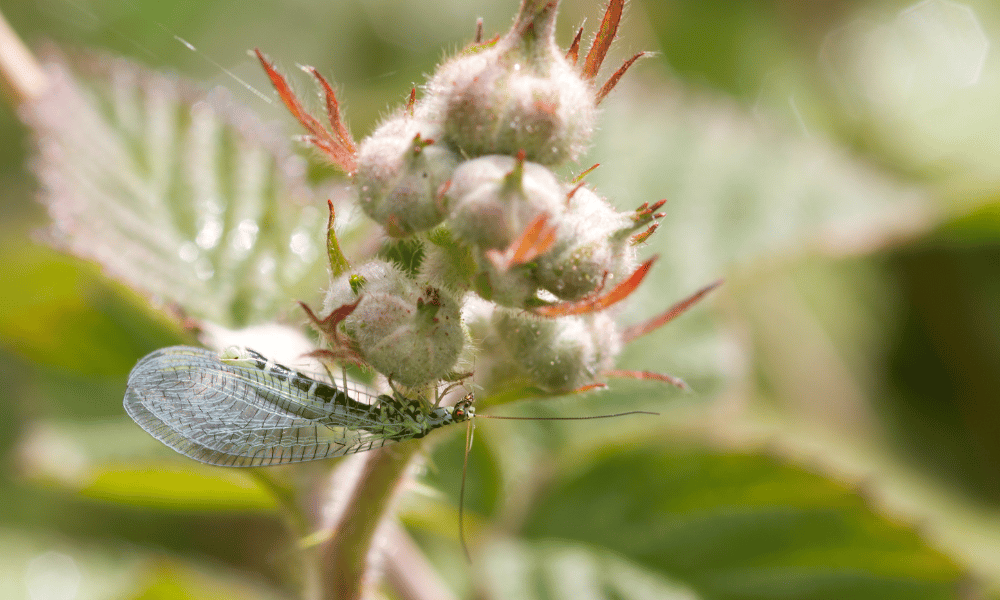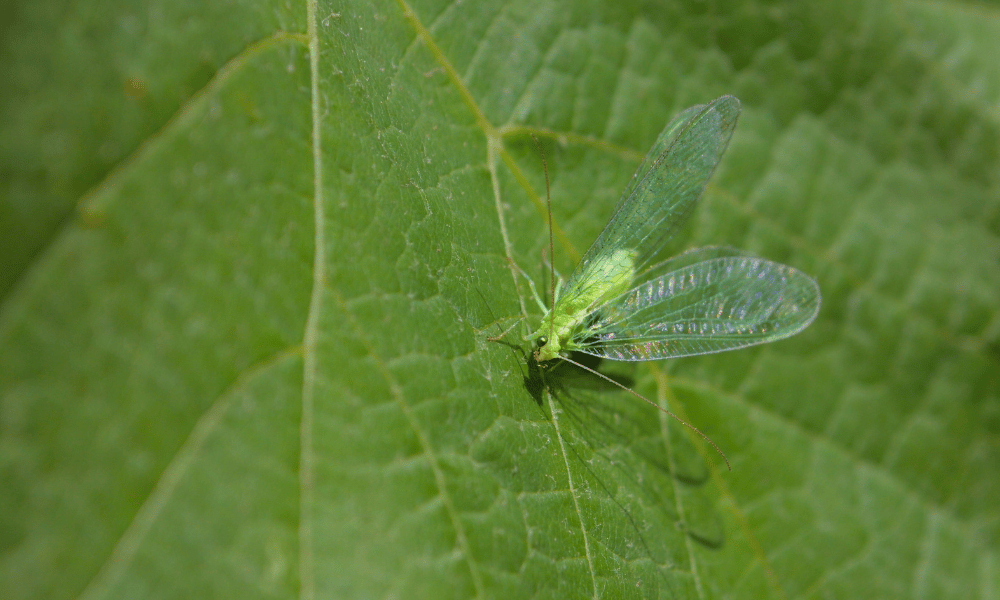Because of their ability to eat so many aphids and other pests, lacewings are a common choice for natural pest control for gardeners. Like many beneficial insects, lacewings feast on soft-bodied insects. But, is this all they eat or do lacewings eat plants too?
No, lacewings do not eat plants. They will eat the nectar and pollen from the flowers, but you will not have to worry about lacewings munching through the green leaves of your garden plants.
What Else Do Lacewings Eat?
Adult lacewings will survive mainly on nectar and pollen from plants. As they feed, these winged insects will help perform the vital process of pollination.
While we usually think of bees or butterflies as pollinators, lacewings can also help with this critical process.

Lacewing larvae are perhaps the most beneficial.
These tiny insects will feast on almost any soft-bodied insect they can find. The most common menu items for these larval creatures are aphids, whiteflies, thrips, and spider mites.
Do Lacewings Eat Aphids?
You have probably heard lacewings referred to as “aphid lions”. The title was earned since lacewings can eat hundreds of aphids every week! In fact, they tend to out-eat any other beneficial insect you can find – including ladybirds!
Because of their ability to be so beneficial at pest control, many gardeners will purchase lacewing eggs from garden centres to release in the springtime.
This will significantly reduce the number of aphids that are able to stake out your garden as their home.
Do Lacewings Eat Whitefly?
In addition to aphids, lacewings will also eat whiteflies.
Whiteflies are a pest that gardeners prefer not to have in their gardens. Even though they are not dangerous to humans, these tiny white flying insects can cause significant damage to your plants and crops.
Not only do they pierce the plant and suck all the juices from it, but they also leave a slimy substance called honeydew on the surface of plants.
This substance increases the chance of fungal diseases and mold taking over your plant’s leaves and, eventually, the entire plant.
Fungal diseases can spread quickly from plant to plant. If you notice one plant that seems to be infested, remove it from the vicinity of other plants as quickly as possible.
Introducing lacewings to your garden can help keep the whitefly population under control.
Do Lacewings Eat Thrips?
Another sap-eating insect that can easily plague a garden is the thrip.
These tiny pests can do a lot of damage to your flowers, plants, and even trees in a short time. Thrips reproduce quickly and can produce as many as 15 generations in just one summer season.
While thrips are searching for moisture and sap, they have been known to bite humans. Their bites leave red and itchy bite marks. While the bites are not severe, they are enough to be a nuisance.
Lacewing larvae are known for eating thrips in gardens. Releasing lacewing eggs is a great and natural way to eliminate your thrip problem this season.
Not only will the lacewing problem last generations, as the lacewings mature and lay more eggs, but they will also stay in the area until the thrips are diminished. Lacewings, like most animals, like meals that are easily accessible and abundant.
Do Lacewings Eat Mites?
Perhaps one of the most infamous pests is the spider mite. These creatures are so tiny that most people are not even aware they have an infestation until it is too late.
Spider mites are tiny insects that make “webs” in plants.
They feed on the chlorophyll in plants, which is essential to the plant’s health and growth. The easiest way to spot spider mites is by checking the underside of leaves for small brown or yellow spider-looking insects.
You will also notice small spots of discolouration on your plant’s leaves. The chlorophyll is what gives the plants their green colour. This is also the part of the plant that performs photosynthesis.
Photosynthesis is the process in which plants take the energy from the sun and turn it into sugar that they later use for energy themselves. This is how they grow, sustain, and repair themselves.
Spider mites are some of the most difficult pests to get rid of. With a proper and rigid course of action as well as releasing some lacewings, you can hopefully get the problem under control in time to save the plant.
Summary
Some pests can do major damage to plants. While most usually stunt their growth, some pests can even kill the plant. While there are many chemical sprays that you can use to protect your garden from these tiny invaders, a natural and efficient way is to use lacewings.
Lacewings eat aphids, whiteflies, spider mites, and thrips. Most people like to release lacewing eggs early in the season in hopes of preventing any pest population from getting a foot hole in the garden.







